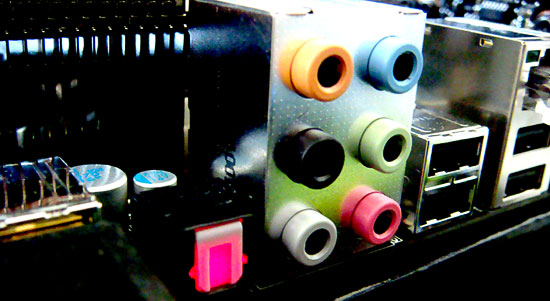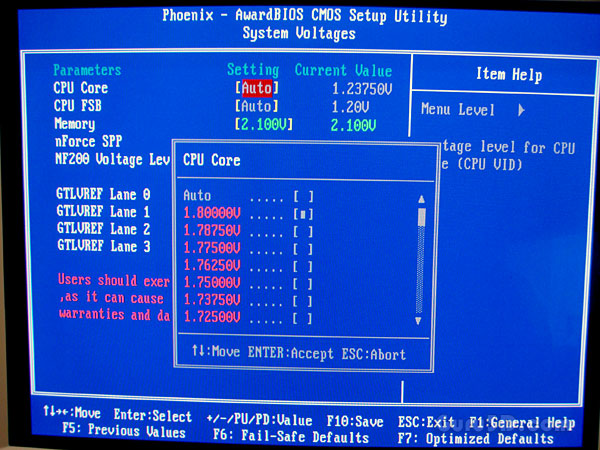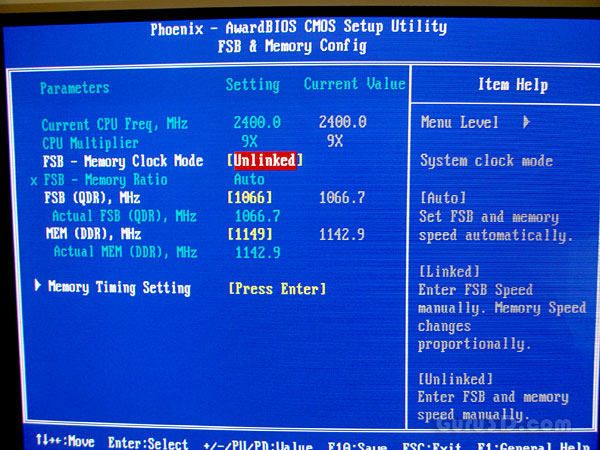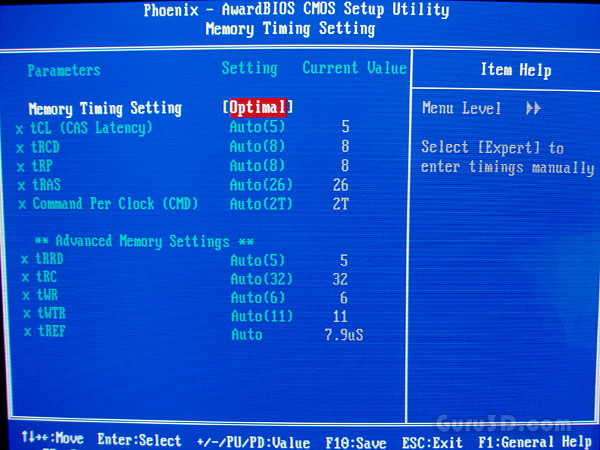3 - Storage - Audio - BIOS
(F)RAID Storage
nForce 750i offer you four native SATA 3Gb/s drives. This mainboard is RAID compatible (0,1, 0+1, 5). As you can see you can make a RAID 5 solution as RAID 5 requires a minimum of three drives. Obviously it is recommended that all drives on the system should be of the same size.
Bare in mind though that NVIDA applies a "fake-raid" solution - I call this FRAID.
Virtually none of the integrated RAID controllers on a mainboard are true hardware RAID controllers. Instead, they are simply multi-channel disk controllers combined with special BIOS configuration options and software drivers to assist the OS in performing RAID operations. This gives the appearance of a hardware RAID, because the RAID configuration is done using a BIOS setup screen, and the operating system can be booted from the RAID.
To install Windows onto a RAID device, you must provide a driver (usually on a floppy disk) to the Windows installer in order to access the RAID array. Under Linux, which has built-in softRAID functionality that pre-dates these devices, the hardware is normally seen for what it is -- multiple hard drives and a multi-channel IDE/SATA controller.
Hence, fakeRAID, the CPU still ends up doing the work.
RAID 5 is the version most often recommended as it takes a number of disks, stripes them together, and puts a parity section on each disk. Therefore if one drive went down, the information is still stored on another disk using parity. Next to that Performance is very close to RAID 0 / Striping]
Also I should mention the MediaShield UI, the RAID unit/SATA connections are hot swappable, meaning you can pull out or insert the plug when the system is powered on. The minute a driver fails or will get unplugged the NVIDIA MediaShield sentinel will pop up and show you what drive/connection has gone bad.
The image shows the hard drive connector ports and provides a visual indication of the location and status of the drives as follows:
- Red rectanglered denotes a failed drive.
- Green rectanglegreen denotes a healthy hard drive.
- Yellow rectangleyellow denotes a member of a failed RAID array, but is not the cause of the failure.
- No color rectangleunconnected ports have no visual indication.
And now then there is the power of RAID 5... if one of the drives fails, the system can continue to run by just writing to one drive. Since you have hot swappable drives, you could pull out the bad drive, plug in a new one and the system is back to its normal state. So you have the media shield alerting you what drive is broken, without disabling the system you swap the driver and bam, it's rebuilding the storage array. Effectively you can now setup two RAID 5 units, or just 0, 1, 0+1.
HD Audio
Integrated audio. And it's not even half bad. NVIDIA took out the AC-97 based audio support in their chipsets. Similar to the nForce 500 lineup, the nForce 600 and now 700 series, will offer full support for the various "Azalia" based High Definition Audio codecs (ALC888S). While the choice of which HDA codec along with the associated circuitry can still greatly impact audio quality and performance as it's not exactly an X-Fi or Auzentech X-Meridian. Still, the Azalia HD codec's are lot's better than the AC-97 solutions as previously offered.

Both analog and digial output can be found on the FTW, I adore these optical outputs.
BIOS Features
Physically the BIOS features have not changed a lot ever since 780i was released. Linkboost is a thing of the past though and you'll fine some new features to accommodate Penryn processor's power saving functions. The 750i BIOS however will give you the ability to control anything. Including a very wide range of frequencies, multipliers, and voltages so users would have more information to adjust settings manually.

Also please notice the new GTLVREF Voltage setting
I'll replicate NVIDIA's explanation here but GTLVREF is used to adjust the input sample trigger point on Intel CPUS. Adjustments to this value can compensate for voltage drops that occur for some loading and traces. For example, GTLVREF can be lowered to account for voltage drops when tuning a Kentsfield CPU instead of a Conroe CPU.
Kentsfield CPUs typically put more loading on key interface signals which results in the average interface voltage drop. GTLVREF is a fine tuning device that can enable higher frequency for some interfaces. A Kentsfield CPU needs two GTLVREF voltage settings; one is for the 4x signal (for FSB data transfer), and the other is for 2x/1x signal (for FSB addressing, control).
- GTLVREF0 -> FSB 4x data signal on core 0
- GTLVREF2 -> FSB 2x/1x address signal on core 0
- GTLVREF1 -> FSB 4x data on core 1
- GTLVREF3 -> FSB 2x/1x address signal on core 1
A newly added feature in voltage selection are color codes, green is good, red is entering a danger zone. Look in the upper photo at the memory voltage, this memory is specced at 2.1v, a save voltage and thus green color.

To fine-tune for stability you can change out the HTT Link Multipliers (1x to 5x), both for upstream and down stream, so that you do not push the Hyper Transport speed way out of stability while adjusting the base reference clocks.
As stetd, no EPP/SLI Meory functions. Therefore the Jedec specified timings will kick in at first bootup.
However the lovely Memory Expert mode allows the memory timings to be adjusted for best performance. Set these as low as possible to achieve the best benchmark scores. Along with the memory speed setting, the following parameters have the most influence on system performance:
- Tcl (CAS Latency)
- Trcd(RAS to CAS Delay)
- Trp (Row Precharge)
- Tras (Active-to-Precharge Delay)
- Addressing Mode 1T/2T (Command Per Clock)
- etc

There are many more features, functions, settings we can discuss. Pretty much anything you need for a good tweak can be found and set to the maximum. You can really go nuts in there from the average to the advanced user. Hell you can even switch off one core of your processor if you want to and I have not even mentioned the advanced monitoring tools which in it's end can be monitored and altered from within Windows as well with the help of nTune.
